This simple Panang Curry combines aromatic veggies with fragrant Panang curry paste and a combination of sweet and golden potatoes, all combined in a rich and creamy coconut base. Garnish with basil, crushed peanuts, and plenty of fresh lime juice!
This curry is naturally vegetarian, but still has protein thanks to the peanuts and sweet peas. That said, it’s easy to add in additional protein — throw in a can of drained and rinsed chickpeas, prepare some tofu, or add in some chicken.
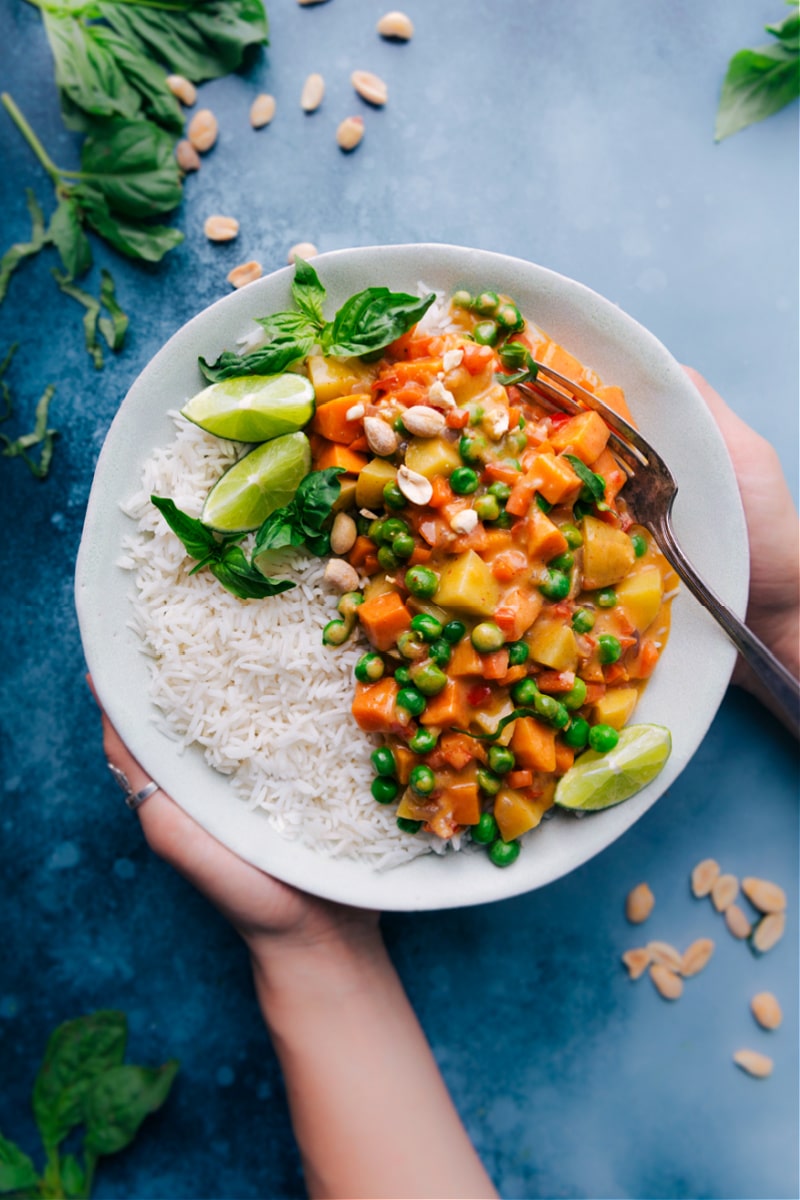
Panang Curry
Years ago while traveling, my husband and I had some Panang Curry in a tiny hole-in-the-wall restaurant (aren’t those always the best ones?!) and I have worked for years to re-create it. It was very rich with a slightly sweet and nutty sauce, loaded with veggies, and packed with both sweet and gold potatoes.
I finally feel like this recipe replicates the one we enjoyed so many years ago. It’s such a satisfying and hearty meal that even my kids love — that’s right, it’s not too spicy! There’s a touch of heat, but overall it’s balanced with a sweetness from the coconut milk. There are underlying notes of peanut and a complementary freshness from the citrus.
Let’s Chat Panang Curry Paste
The curry paste in this recipe is the main flavor of this dish. While Panang curry paste can be a bit more tricky to find than other curry pastes, it’s essential for this recipe.
- Where to find it: You may find it in the international section of your grocery store, but I haven’t had much luck there. I typically buy it online or from an Asian grocery store.
- What it tastes like: Panang curry paste will differ a bit from brand to brand but typically you’ll find the following ingredients in the paste: dried red chiles, garlic, shallot, lemongrass, sugar, salt, kaffir lime, galangal, spices (coriander seeds, cumin, cardamom, bay leaves). Panang curry paste is typically sweeter with an earthier flavor.
- What brand to use: If you have special dietary restrictions you’ll want to check the ingredients of the curry paste — a lot contain fish sauce or shrimp. If you’re vegetarian or vegan, you’ll want to make sure the brand you use is vegetarian/vegan. If you’re gluten-intolerant, check for that too — a lot of curry pastes are made without gluten. My favorite brand to use is Maesri.
- What Panang Curry is similar to: It has a deep red color and similar ingredients to a traditional red curry, but less spicy and much sweeter than red curry.
- How much curry paste to use: Again, the intensity of the curry paste will vary from brand to brand. We found 2 tablespoons of Maesri curry paste (offset by the sweet coconut milk) to be perfect for kids, but my husband and I prefer 3 tablespoons for a little more heat.
Panang Curry Ingredients
There are a few ingredients worth mentioning and offering suggestions or substitutes for:
- Kaffir lime leaves are found in a lot of Panang curries. They add a vibrant, citrus flavor, but can be tricky to find. If you have access to some, crumple a few up and throw them in when you add in the coconut milk and remove them before serving. To get a citrusy flavor without the leaves, zest and juice a lime and mix through right before serving.
- Fish sauce is a common finishing ingredient in Thai curries — it adds that final seasoning and umami flavor. If you aren’t vegetarian, feel free to add some in, but since I wanted this to be a vegetarian recipe, the recipe calls for soy sauce instead. Use regular (not lite) soy sauce.
- Thai basil is the preferred topping for Panang Curry, but I can’t get my hands on it where I live. If you can, great — use that! If not, we enjoy regular basil on this curry.
- Peanut butter is another common ingredient in curry, but we prefer crushed peanuts as a topping instead. If you don’t have peanuts, mix about a tablespoon of creamy peanut butter into the curry sauce instead.
- Coconut milk. More on this ingredient below
Coconut Milk
Coconut milk is an integral part of this recipe. It’s sweet and nicely balances the spice from the curry paste. It’s also thick and creamy which makes this curry very rich and indulgent tasting.
To mimic the thickness, sweetness, and richness of Panang Curry we enjoyed so many years ago, I created this recipe with 2 cans of coconut milk. If 2 cans are too much for you, use 1 can of coconut milk and replace the other can with 1 cup of vegetable (or chicken if you aren’t vegetarian) stock.
It can be overwhelming to navigate coconut milk in the grocery store. Look for shelf-stable, not refrigerated, cans of coconut milk. You’ll find canned coconut milk on the international aisle, with Latin or Asian products. Here’s an article outlining the best brands to use. I personally use Imperial Kitchen® since I can find it at my local grocery store and enjoy the richness of this brand. Use full-fat coconut milk for the best flavor and thickness. Lite coconut milk won’t thicken and give you the rich, full flavor that regular coconut milk will. Cream of coconut is far too sweet and coconut cream tends to be too thick (and overpoweringly coconut flavored) for this curry.
Panang Curry Tips
- Take time to sauté the curry paste. Instead of immediately dumping everything else into the pot, we want to take time to sauté the curry paste. This creates a more heightened flavor dimension.
- In order for everything to cook in time and ensure the veggies are tender, it’s important to cut both types of potatoes very small (1/2-inch pieces). We recommend peeling the sweet potatoes, but it’s fine to leave the peels on the golden potatoes. (The peels are so delicate you won’t notice them.)
- Salt is hugely important in helping to bring out and enhance existing flavors. Seasoning throughout the cooking process is going to bring out the most robust flavors!
- Finishing the curry. After the curry has thickened and potatoes are tender, it’s time to really bring the flavors alive. This is where some taste testing and experimentation come on your part. Add fresh lime juice and zest, sugar, soy sauce, salt, etc. all to personal preference. The amounts of these ingredients will vary based on the curry paste and coconut milk you used and your personal taste preferences.
Storage
Panang Curry Storage
One of my favorite things about curry recipes is how well they store! Leftovers only get more and more flavorful as they sit. Store any leftover curry in an airtight container in the fridge for 3-5 days. Reheat over low heat, adding a splash of vegetable broth/stock (chicken stock if you aren’t vegetarian) as needed to thin the sauce.
Freeze leftovers in an airtight container for up to 3 months. Defrost fully in the fridge before reheating on the stovetop.
More curry recipes
- Mango Chicken Curry with a coconut-mango base
- Curry Lentil Soup with red lentils
- Chickpea Curry with lots of veggies
- Yellow Chicken Curry with yellow curry paste
- Coconut Curry Chicken with sweet peppers
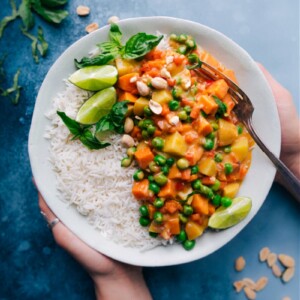
Panang Curry
Equipment
- Large, deep pan
Ingredients
- 2 tablespoons coconut oil or olive oil
- 1 cup finely diced red onion 1 large red onion
- 1 cup finely diced red pepper 1 bell pepper
- 1 cup finely diced carrot 3–4 large carrots
- 1 tablespoon minced garlic 4 cloves
- 2 teaspoons minced ginger
- 1 teaspoon salt
- 3 cups peeled and diced sweet potatoes
- 1 cup diced gold potatoes or more sweet potatoes
- 2 tablespoons panang curry paste see note 1
- 2 (13.5-ounce) cans coconut milk regular (full-fat), see note 2
- 1 cup frozen peas
- 1 tablespoon soy sauce see note 3
- 1 to 3 tablespoons light brown sugar add to taste
- 1 lime see note 4
- Roasted peanuts optional topping, see note 5
- Fresh basil optional topping
- Cooked rice optional, for serving
- Warmed roti bread optional, for serving
Instructions
- Dice the red onion, carrot, and bell pepper (by hand or quickly in a food processor). Mince the garlic and ginger. (I peel the ginger with a spoon or vegetable peeler first.) Peel and chop sweet potatoes into bite-sized pieces (1/2-inch). No need to peel gold potatoes, but chop them into small pieces (1/2-inch). Keep potato pieces fairly small so they’ll cook at the right time.
- Heat the coconut oil in a large, deep pan over medium-high heat. Add the onion, carrot, and red pepper and sauté for 7–10 minutes, until onions begin to turn golden. Add garlic and ginger. Stir to coat everything with the oil. Season with salt (to taste). Lower heat to medium and add curry paste. Stir often for 2–3 minutes or until very fragrant. Add sweet and gold potatoes and stir to coat for 1 minute.
- Pour in coconut milk. Stir. Scrape the bottom of the pot periodically and press all potatoes below the liquid. Bring to a boil, then reduce heat to rapidly simmer (it should be bubbling at the edges but not boiling), 18–25 minutes, stirring occasionally. Potatoes should be fork tender and curry sauce reduced; this happens after 20–22 minutes for me. Add a splash of water or vegetable stock/broth if the sauce is reducing too quickly and potatoes aren’t getting tender. (This means you may need to lower the heat a little. Increase heat slightly if potatoes aren’t getting tender and sauce isn’t reducing.)
- Turn off heat and stir in the peas. Add sugar (start with less—you can always add more; add to taste), soy sauce, and 1 tablespoon lime juice (adjust these ingredients to preference—add more soy sauce for seasoning/umami flavor, more lime for a fresh flavor, and more sugar if too spicy). Taste and add more salt if needed—(I typically add another 1/4 up to 1/2 teaspoon). Flavors should be vibrant, and curries typically need a lot of salt!
- Remove curry from heat. If desired, serve curry over cooked rice. Garnish individual bowls with basil and coarsely chopped peanuts. I also like to serve lime wedges on the side. Serve over cooked rice with warmed roti bread. Enjoy!
Video
Recipe Notes
Nutrition
Nutrition information is automatically calculated, so should only be used as an approximation.
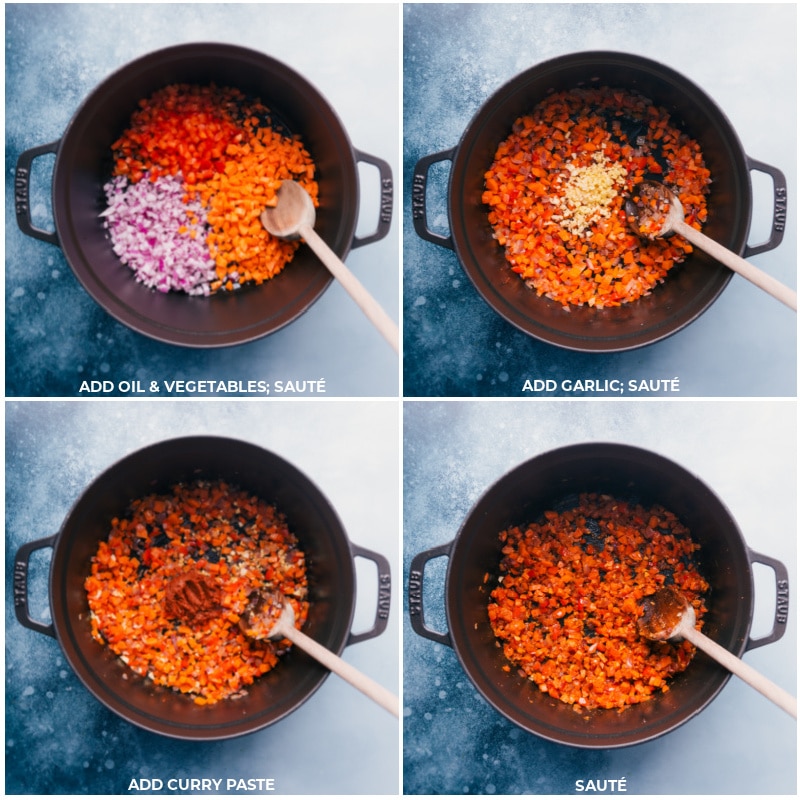
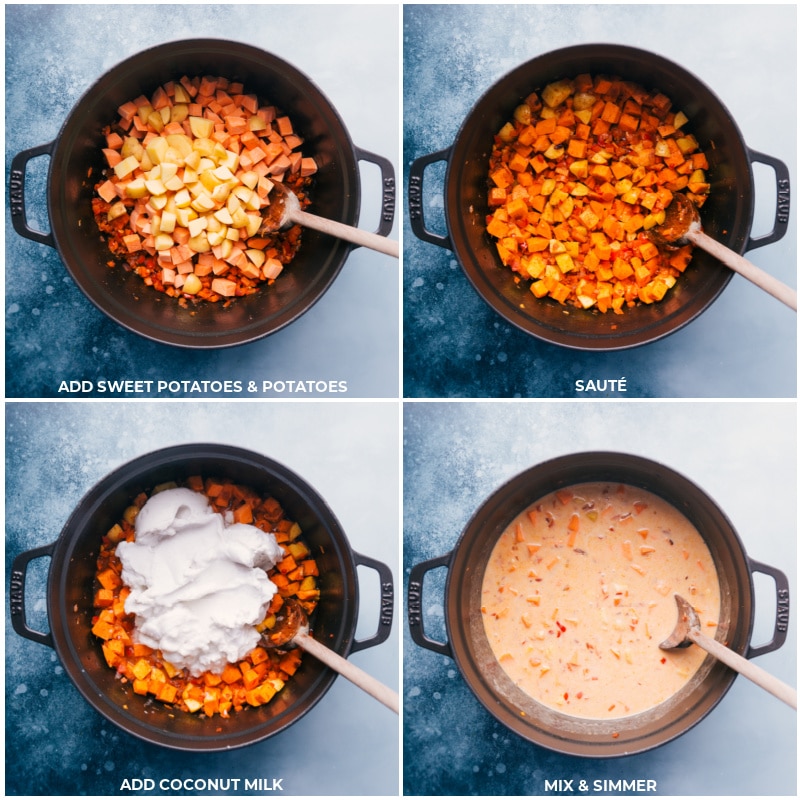
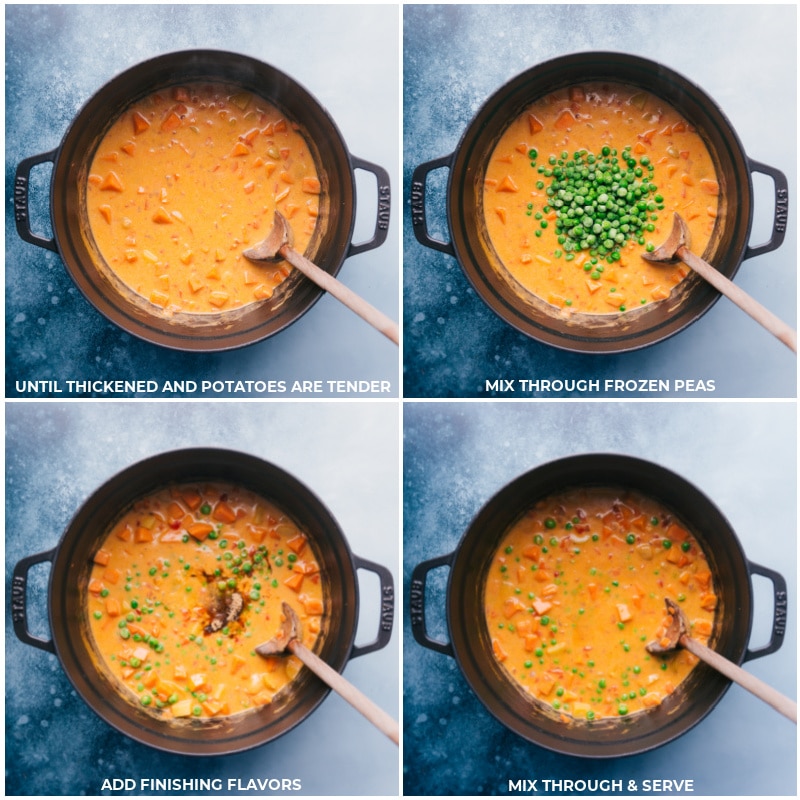
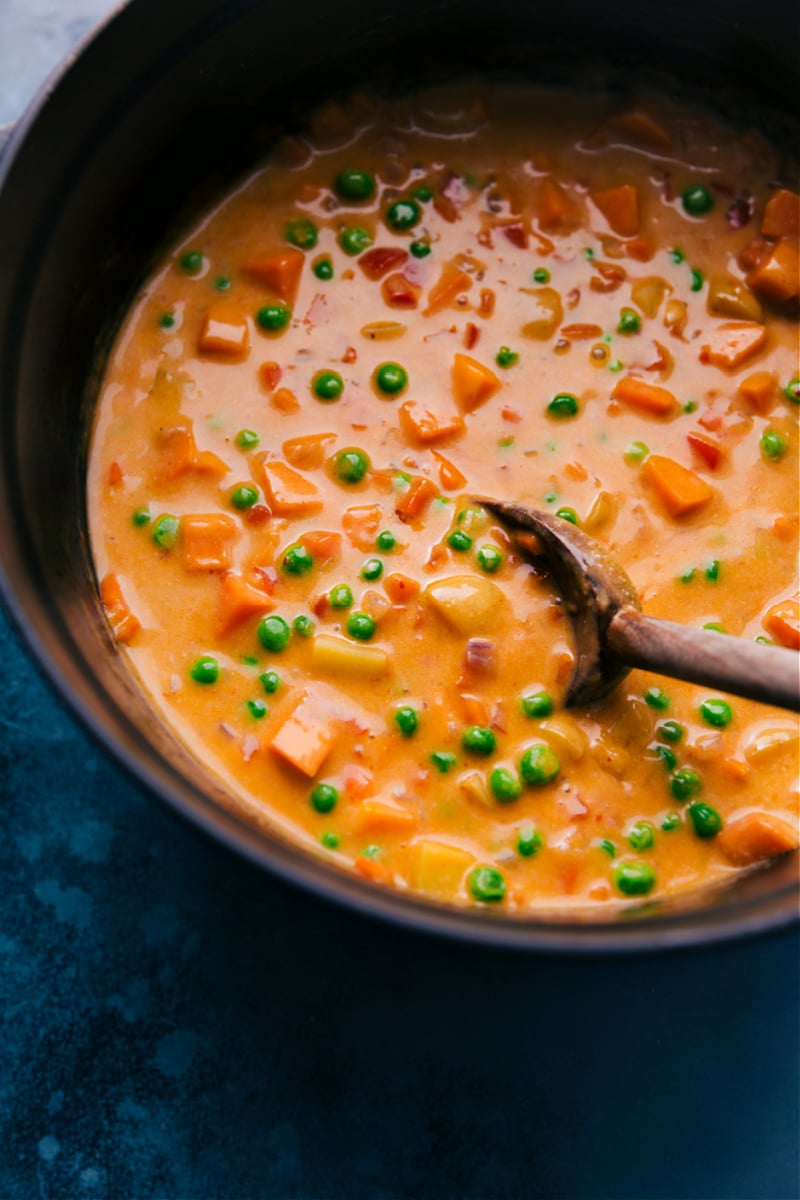


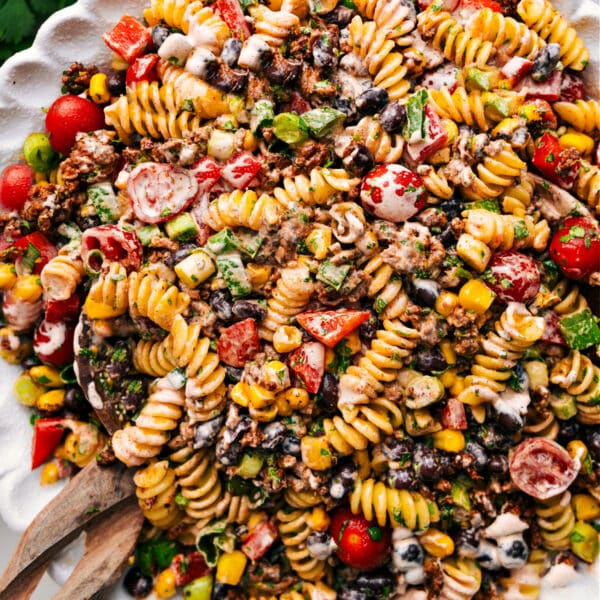

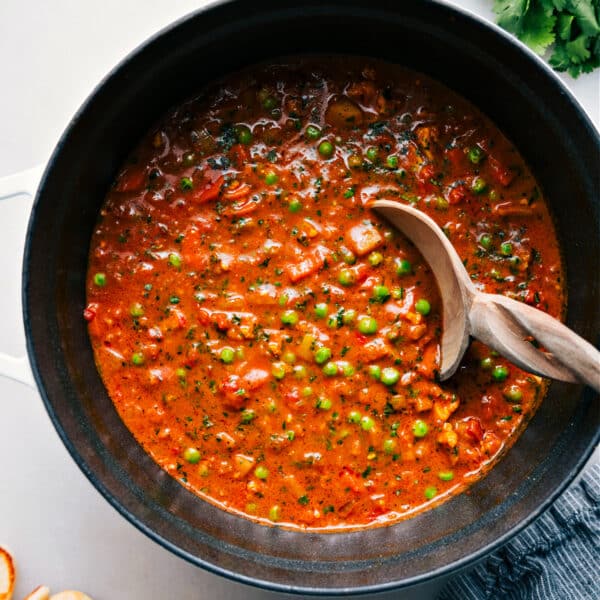
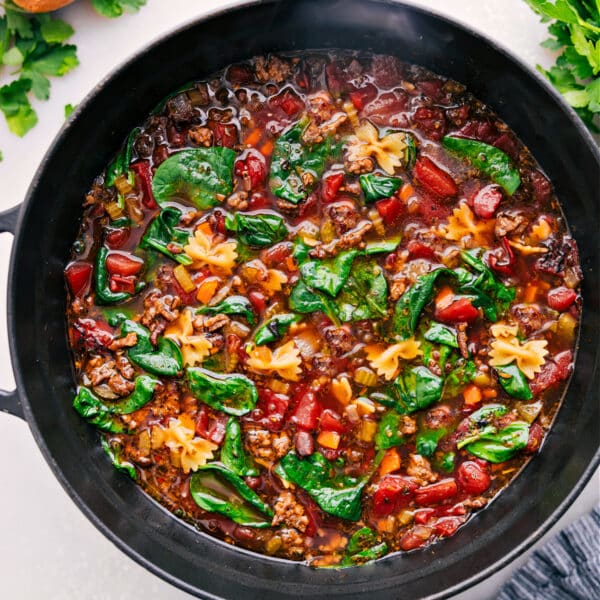









Will be making this soon can i use more soy sauce as am a vegan i never had panang curry with sweet potatoes before perfect for my after office meals will dm you if i make this and let you know how it goes Thanks Ramya
I would love to hear! Thanks Ramya! 🙂